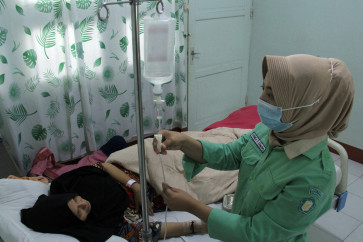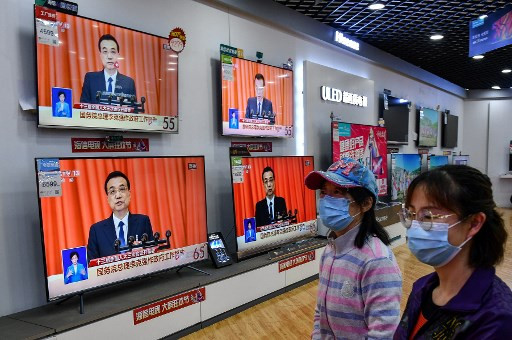The new face of printing technology
Back in the 1990s, when buying a new printer we would usually check out and compare printer specifications
Change Size

B
ack in the 1990s, when buying a new printer we would usually check out and compare printer specifications. We would base our final decision on performance indicators such as printing resolution, printing speed and duty cycle.
Today, these figures have become irrelevant. We still consider which printing technology is the best to meet our needs -- whether we need laser or inkjet printer -- but we care little about the rest. We sometimes don't even take the total cost of ownership (TCO) into account.
However, if you were the IT manager of a large enterprise, how would you handle the printing needs of your firm? Would you give each employee a printer? Would you leave it up to individuals to select the printer that suited them best? How would you make sure all printers were accounted for and not used extensively for personal needs?
Questions such as these used to boggle the minds of IT managers. Luckily, the penetration of networks into organizations -- small and large -- has enabled people to share their printing resources. At the same time, asset management software also gives organizations the capability to control usage and get the best TCO.
"Armed with a network-based solution, an IT manager can track down how much printing each work-group does, and then he can bill them accordingly," said Chris Morgan, the vice president of Imaging and Printing in Japan and the Asia Pacific region.
Morgan also shared his ideas on current trends in the printing business. We all know how companies all over the world constantly struggle to improve their efficiency.
If companies want to achieve maximum efficiency in printing, they have the option of providing only one printer for every employee to share.
However, this would bring productivity to its lowest point, as people would have to wait each time they needed to print something. They would also have to walk over to the printer to pick up printouts.
"Just imagine if you had three floors of office workers and everybody had to go downstairs to pick up their stuff," Morgan joked.
The other extreme is to give every worker a printer. While this generosity may maximize productivity, it would definitely cause investment and operational costs to shoot through the roof.
Besides, in the workplace, most printers are idle most of the time. If the IT manager had no way of keeping printer usage under control, his co-workers would develop an itch to press Ctrl-P regularly. I've seen this situation over and over again in my clients' offices.
The question is, how should IT managers decide which option is best for his or her organization? Is there someone out there who can offer advice?
Currently companies have the option of signing a managed printing services (MPS) contract with a printing solutions provider.
MPS providers have gained acceptance among large enterprises in recent years. Service providers examine each organization's printing requirements and help determine how many color and how many monochrome laser printers a company needs.
Of course, drafters, graphic designers and architects need their own printers, while shared multifunction printers (MFPs) may be a better choice for those working in administrative departments. MPS providers makes recommendations based on their observations.
MPS providers also set up printing networks, including servers and cables. They also install the necessary software on each computer.
It is quite a labor-intensive job, especially in large companies with a lot of branches. For the entire duration of their contract, MPS providers take care of any necessary maintenance and repair jobs in accordance with the Service Level Agreement (SLA).
The SLA may require, for example, that a printer problem must be solved within three hours or it will have to be replaced with a backup unit to avoid prolonged work disruptions. The provider will also make sure printer users never run out of supplies and that only original ink and toner cartridges are used.
The main benefit of MPS contracts for enterprises is that they no longer have to worry about printers or printing needs. Enterprises only have to pay their service provider a certain amount of money each month.
This enables IT managers to accurately project overall printing costs as part of their annual IT budgets.
What about the MPS market in Indonesia?
Subin Joseph, the managing director of HP Indonesia's Imaging, Printing and Personal Systems Group, said the number of customers seeking MPS contracts was growing. He said banks, financial companies and other enterprises with large printing needs were among those increasingly using the service.
"Our advantage is that we are an IT company," he said.
"We provide computers, networking equipment, network management software and a lot of expertise in this area. This makes us the dominant MPS provider in the market."
I had a question on my mind when I accepted the interview offer. I wanted to know whether people still needed a large volume of printers today.
As networks are increasingly commonplace in small and medium businesses and even in homes, people can share their printing resources very easily. At the office, one printer can be used by a work-group of ten people, for example. At home, one entire family can send their documents to a single networked printer without having to move files from one computer to another.
In addition, printers have better longevity, too.
My wife's PC is connected to a LaserJet 6L that is still in good working order. My own LaserJet 3015 is still as good as new, despite its three years of use. This means the market for replacement printers may be declining.
But Chris said he was confident about the future of the printer business. Today, the internet offers so much information and people simply print things out fearing certain URLs will disappear in the future. So, despite the global movement toward cutting down on paper, the internet has made printers even more necessary.
The growth of the small-and medium-sized business (SMB) sector is another driving force behind the printer industry's strong performance. SMBs are currently the biggest IT spender. There are also some niche markets such as personal photo printing.
And HP is still faring very well in the printer business. According to IDC data, its monochrome LaserJets had a 73 percent market share in the third quarter of 2007, while its color LaserJets controlled 66 percent of the market. Its inkjet printers have been doing very well too.
"This year we will be introducing around 20 new printer models, some only for certain regions and others for the global market," said Mariana Kasim, HP Indonesia's Marketing Director for the Imaging and Printing group.
"And in line with the latest trends in green technology and in anticipation of the skyrocketing cost of power, all of them will be energy efficient," she said.









